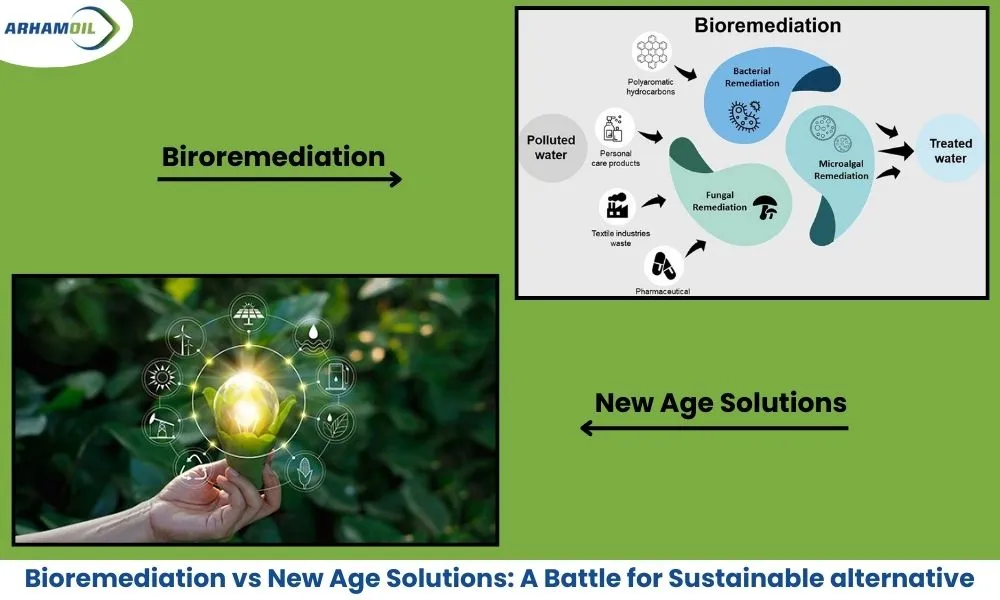A Complete Guide to Oily Sludge Treatment Process
September 14, 2024No Man Entry Robotic Tank Cleaning: The Future of Industrial Cleaning
September 19, 2024The Oil Recovery Challenge: A Persistent Environmental Threat
Oil-contaminated sludge, a by-product of various industrial processes, presents a significant environmental hazard. Current methods, such as Mechanical (Centrifuge) or Chemical methods of oil recovery, have been instrumental in recovering oil and reducing oil content to a certain extent in the residual sludge. However, these methods often fail to reduce the oil content to the acceptable threshold of less than 1%, leaving behind a persistent residue. This residual oil content in the sludge poses a continued threat to the environment and can hinder the efficiency of subsequent clean-up efforts. raditionally, bio-remediation has been the primary approach to manage sludge with oil content below 10%, bringing it within regulatory limits. However, bio-remediation presents several challenges, including the loss of recoverable oil to bacterial activity and the unintended release of greenhouse gases.
To address these challenges, researchers and engineers have explored innovative technologies that can significantly improve oil recovery rates and reduce environmental impact. This blog explores the strengths and weaknesses of bioremediation and these new technologies, providing insights into their potential applications.
The Limitations of Bioremediation
- Intentionally contaminating the good soil: Bioremediation processes often become less efficient as the oil content in the sludge increases above 5%, hence if a 10% oil content sludge is brought for bio-remediation then it will have to be mixed with equal amount of good soil to bring the concentration down to less than 5%, since, bio-remediation bacteria may not survive in high hydrocarbon concentration.
- Time-Consuming: Bioremediation can be a lengthy process, requiring weeks or even months to achieve significant oil reduction. This can delay the reuse or disposal of the sludge, impacting overall efficiency and cost-effectiveness.
- Unpredictable Results: Environmental conditions such as temperature, pH, oxygen levels, and nutrient availability can affect microbial activity, making the process difficult to control and predict.
- Nutrient depletion: Bioremediation can deplete nutrients in the soil or water, impacting the overall ecosystem health.
- Incomplete Degradation: Sometimes bioremediation leads to partial breakdown of contaminants, resulting in the formation of by-products that may still be harmful or even more toxic than the original substance.
- Release of Greenhouse gasses: During the bio-remediation process several harmful gasses (CH4, CO2, H2S, VOCs etc) are released as a by-product which are generally not being contained and are released in the environment raw.
Why New Age Solutions Matter
For a country like India, which heavily rely on imported energy, the efficient recovery of these lost oil from residual sludge can have an economic and environmental benefits. By maximizing oil recovery, we can save valuable foreign exchange reserves, and minimize the environmental impact of the otherside of Bio-remediation.
New New Age Solutions: A Game-Changer
Several emerging technologies offer the potential to overcome the challenges of bioremediation. Here are a few examples:
- Hydrodynamic Cavitation (HC): HC involves the creation and collapse of bubbles, generating intense energy that can break down complex molecules. This technology has shown promise in treating various types of waste, including residual oily sludge.
- Super Oxidation: This method utilizes powerful oxidizing agents to degrade organic contaminants. Super oxidation can effectively break down hydrocarbons, even in low concentrations, making it a suitable option for treating oil-contaminated sludge.
- Microwave Irradiation: By applying electromagnetic energy, microwave irradiation can heat the sludge, causing the oil to separate and facilitating its recovery. This technology offers a rapid and efficient way to treat oily sludge, especially when combined with other methods.
The Benefits of New Age Solution
These innovative technologies offer several advantages over traditional bioremediation:
- Recovery of Lost Oil: By applying these methods we can recover effectively the last drop of the oil contained in the residual oily sludge which would otherwise have been eaten up by the bacteria during bio-remediation.
- Financially self-sustainable: The finance required in this method would be self sustainable since the recovered oil can very well pay off the capex and opex expenses involve in this method over time.
- Faster Treatment Times: New technologies can significantly reduce the time required to clean up contaminated sites, accelerating remediation efforts.
- Improved Efficiency: These methods often demonstrate higher efficiency in removing residual oil, especially from low-concentration sludge.
- Versatility: Many of these technologies can be applied to a wider range of contaminants and environmental conditions, making them more adaptable to diverse remediation scenarios.
A Call for Innovation and Collaboration
As we, as a company, are into oily sludge handling and processing services so we request and call for collaboration by the Oil industry giants in India e.g. E&P companies and refineries to collaborate with us to take these research to the next level and support us to make these new technology ready for field trials. By combining the strengths of bioremediation with innovative approaches, we can develop more comprehensive and efficient solutions to protect our environment.
Conclusion
While bioremediation has played a valuable role in handling residual oily sludge, it is clear that new technologies offer the potential for more efficient, effective, and sustainable solutions. By embracing these innovations, we can not only improve our energy security but also protect our environment for future generations.


